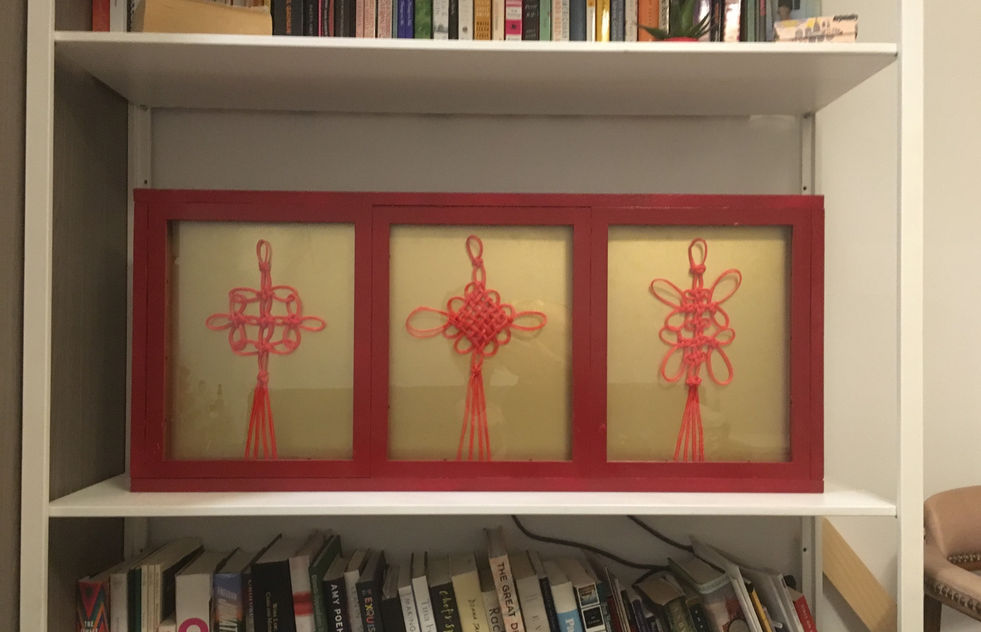lucky/lonely neon signs
Modernized Chinese knots are formed with electroluminescent wire, creating the impression of intricate neon signage. The lights are ‘lonely’, and respond to interaction by flickering on when they detect a viewer, becoming more and more steady as the viewer approaches until they finally maintain a constant brightness. This reliance on external characters to function correctly as lights acts as a gesture towards the importance of community within the Chinese diaspora - without the support of others, the individual fades and becomes unable to function correctly.
Historically, Chinese immigrants to the US have created their own spaces, forming Chinatowns across the country, which promoted the retention of their native culture; however, tension can be found between the first and second generations of Chinese-Americans as the former find the latter drifting away, prioritizing assimilation in the face of societal pressure at the cost of weakening their connection to their rich cultural history. The knots, practiced and passed down through generations, must modernize themselves by emulating the neon signage found throughout Chinatowns, else they too be lost in favor of American aesthetics. While they struggle to light when neglected, when approached with intention, they are able to thrive, pointing to the possibility of reconciliation through the building and maintaining of community; the art of the first generation is sustained by the participation and adaptation by the second generation.
signs that long for observers
the process behind the work







